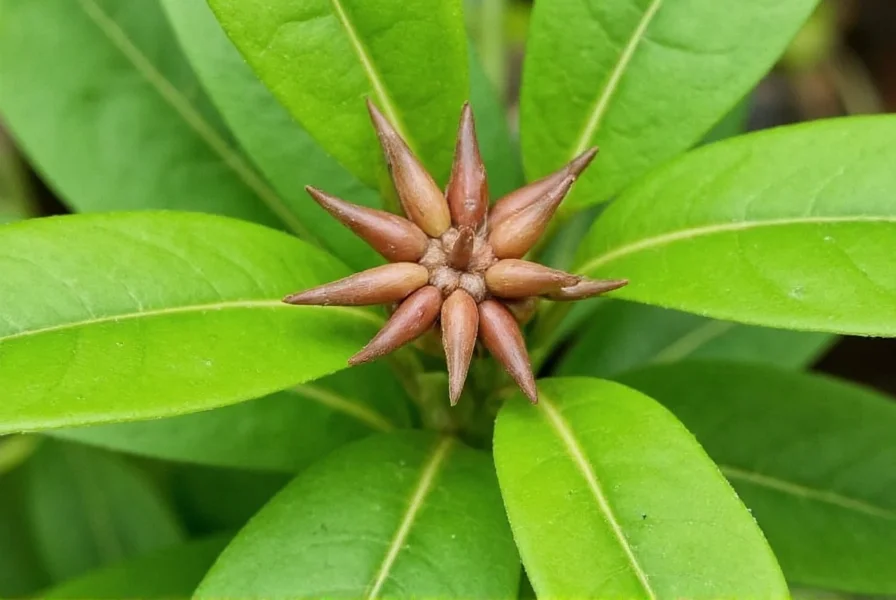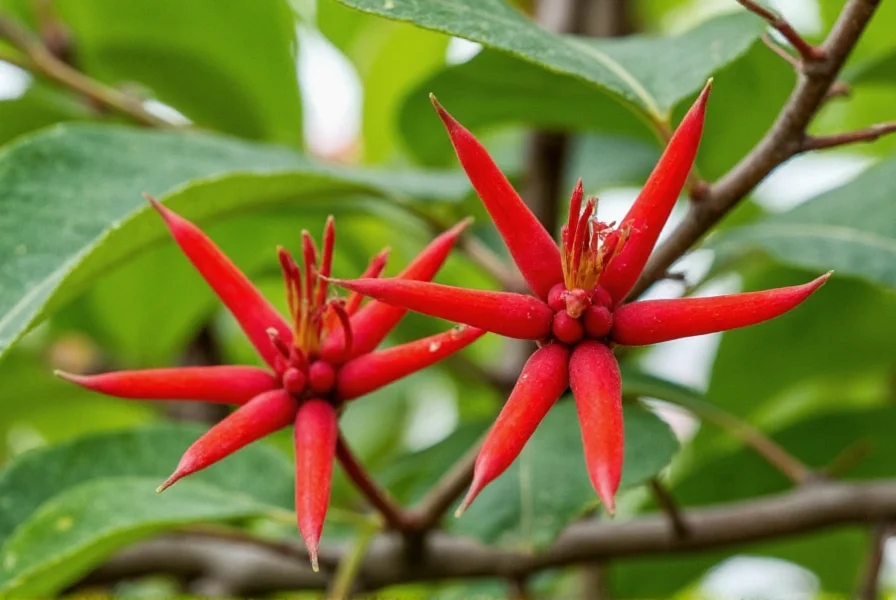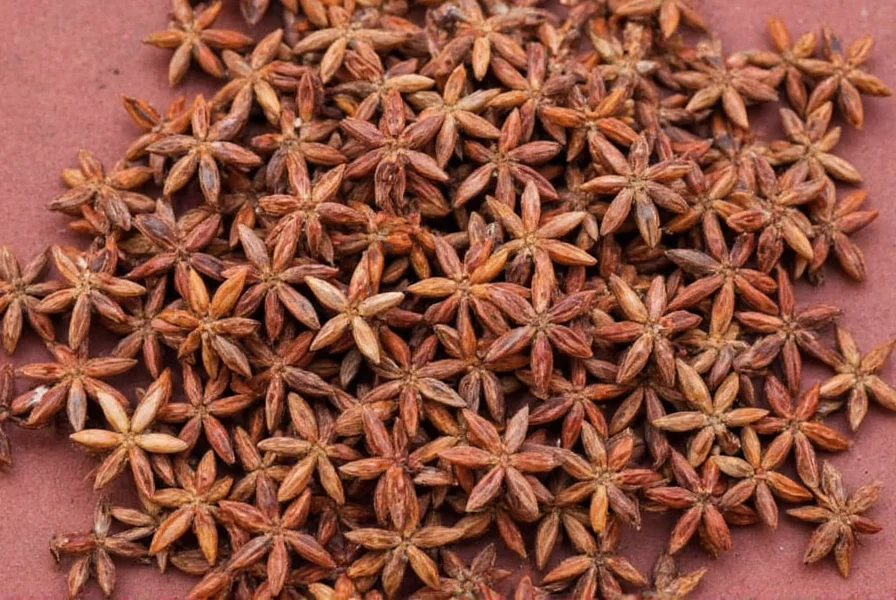Chinese star anise has been an integral component of Asian culinary and medicinal traditions for centuries. This unique spice, characterized by its distinctive eight-pointed star shape, delivers a complex flavor profile that enhances both savory and sweet dishes. Understanding its proper identification, culinary applications, and safety considerations is essential for home cooks and professional chefs alike.
Botanical Identification and Origin
Scientifically known as Illicium verum, Chinese star anise belongs to the Schisandraceae family. Native to the subtropical regions of Southwest China and northern Vietnam, this evergreen tree typically grows 6-15 meters tall. The spice itself consists of the mature, dried fruit pods that naturally form a star shape with 6-8 carpels, each containing a single seed.
Harvested twice annually (spring and fall), the immature green pods are sun-dried until they transform into the characteristic reddish-brown color. This drying process concentrates the essential oils responsible for the spice's distinctive aroma and flavor.
Physical Characteristics and Identification
Authentic Chinese star anise can be identified by several key features:
| Feature | Chinese Star Anise | Japanese Star Anise (Toxic) |
|---|---|---|
| Color | Reddish-brown | Darker reddish-brown |
| Shape | Consistent 8-pointed star | Irregular 10-12 points |
| Points | Straight, tapered tips | Curved, hook-like tips |
| Texture | Smoother surface | Rougher, more textured |
| Smell | Sweet licorice aroma | Less pleasant, musty odor |
Proper identification is crucial because Japanese star anise (Illicium anisatum) contains toxic compounds that can cause severe neurological symptoms. Always purchase from reputable sources to avoid accidental substitution.

Culinary Applications and Flavor Profile
Chinese star anise delivers a complex flavor profile combining sweet, warm, and licorice-like notes with subtle hints of clove and pepper. This versatile spice plays several important roles in cooking:
- Forms the base flavor in Chinese five-spice powder
- Essential ingredient in Vietnamese pho broth
- Used in Indian garam masala blends
- Enhances braised meat dishes and stews
- Adds depth to fruit compotes and baked goods
When using Chinese star anise in cooking, remember that its flavor intensifies with longer cooking times. Whole pods work best for slow-cooked dishes, while ground star anise suits baked goods. Typically, one whole pod flavors approximately 4-6 servings of soup or stew.
Traditional Medicinal Uses and Modern Research
Traditional Chinese Medicine has utilized Chinese star anise for centuries to address digestive issues, respiratory conditions, and as a warming herb during cold seasons. Modern research has begun investigating several potential benefits:
- Antimicrobial properties: Studies show effectiveness against certain bacteria and fungi
- Source of shikimic acid: Primary natural source for oseltamivir (Tamiflu) production
- Digestive aid: May help reduce bloating and gas
- Antioxidant content: Contains compounds that combat oxidative stress
While promising, most health claims require more rigorous scientific validation. Chinese star anise should be considered a culinary spice rather than a medicinal treatment without professional guidance.
Selecting and Storing Chinese Star Anise
For optimal flavor and safety, follow these selection and storage guidelines:
- Purchase whole pods rather than ground spice for better freshness and easier identification
- Look for deep reddish-brown color with intact, symmetrical points
- Avoid pods with signs of mold, excessive breakage, or musty odors
- Store in an airtight container away from light and moisture
- Properly stored, whole pods maintain quality for 2-3 years
Ground star anise loses potency more quickly and makes proper identification impossible, increasing the risk of accidental substitution with the toxic Japanese variety.
Safe Substitutes for Chinese Star Anise
If you don't have Chinese star anise available, consider these alternatives for similar flavor profiles:
- Anise seeds (use 1/2 teaspoon for each star anise pod)
- Fennel seeds (milder flavor, use 3/4 teaspoon per pod)
- A combination of cloves and licorice root
- Five-spice powder (contains star anise among other spices)
Remember that substitutes won't replicate the exact flavor profile but can provide similar aromatic qualities in a pinch. For authentic Chinese or Vietnamese dishes, however, Chinese star anise remains irreplaceable.

Frequently Asked Questions
Is Chinese star anise safe to consume?
Yes, authentic Chinese star anise (Illicium verum) is safe for culinary use when properly identified. The confusion arises because Japanese star anise (Illicium anisatum) is toxic and sometimes mistakenly sold as the Chinese variety. Always purchase from reputable sources to ensure you're getting the safe Chinese variety.
What's the difference between Chinese and Japanese star anise?
Chinese star anise has 8 straight, tapered points and a sweet licorice aroma, while Japanese star anise typically has 10-12 curved, hook-like points and a less pleasant odor. Most critically, Chinese star anise is safe for consumption, whereas Japanese star anise contains toxic compounds that can cause severe neurological symptoms and should never be used in cooking.
How do I use Chinese star anise in cooking?
Add whole pods early in the cooking process for soups, stews, and braises to allow flavors to infuse. One pod typically flavors 4-6 servings. Remove pods before serving as they remain hard. For baked goods, use ground star anise sparingly (1/4-1/2 teaspoon per recipe). Chinese star anise works particularly well in pho broth, red-cooked dishes, and spiced teas.
Can I grow Chinese star anise at home?
Chinese star anise trees require subtropical conditions (USDA zones 8-11) with high humidity and well-drained soil. They grow slowly and typically take 6-8 years to produce fruit. While possible to grow in suitable climates, most home gardeners find it more practical to purchase the spice rather than cultivate the tree, especially considering the long wait for harvestable fruit.
Does Chinese star anise have any health benefits?
Traditional medicine has used Chinese star anise for digestive and respiratory issues, but scientific evidence for specific health benefits remains limited. It contains shikimic acid (used in Tamiflu production) and shows antimicrobial properties in laboratory studies. While it's a flavorful culinary spice with some antioxidant properties, it should not be considered a treatment for medical conditions without professional guidance.











 浙公网安备
33010002000092号
浙公网安备
33010002000092号 浙B2-20120091-4
浙B2-20120091-4